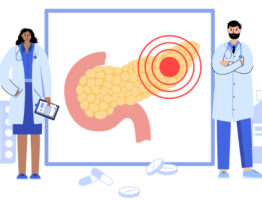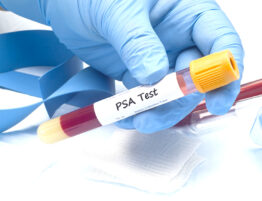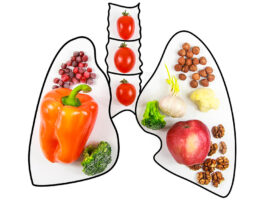
Liver cancer is a type of cancer that originates in the cells of liver. Liver is the body’s largest internal organ and it is mainly responsible for nutrients breakdown and storage, bile production and excretion, regulation of clotting factors and detoxification of toxins.
Liver cancer is one of the most common cause of cancer deaths worldwide, contributing to over 700,000 deaths per year.
The American Cancer Society’s estimates for primary liver cancer and intrahepatic bile duct cancer in the United States for 2020 are:
- About 42,810 new cases will be diagnosed.
- About 30,160 deaths from primary liver cancer and intrahepatic bile duct cancer.
Types of liver cancer:
- Hepatocellular carcinoma (HCC): is the most common type of liver cancer originating from hepatocytes (main type of liver cells).
- Cholangiocarcinoma (bile duct cancer): is a type of liver cancer that originates in the bile ducts, which are thin tubes that carry bile from the liver to the gallbladder into the small intestine within the liver that carry bile to the gallbladder.
- Angiosarcoma or hemangiosarcoma: is rare and fast-growing type of liver cancer that originates in the blood vessels of the liver
- Hepatoblastoma: is a very rare type of liver cancer that occurs in children, commonly younger than 4 years old.
- Secondary liver cancer (metastatic liver cancer): is a cancer that originates from another part of the body, commonly primary colon, and spreads (metastasize) to the liver
What are the risk factors of liver cancer?
- Gender: men are more likely to develop liver cancer than women. According to the American Cancer Society, liver cancer incidence rates and death rates are higher in men than in women.
- Race/ethnicity: liver cancer is more common in countries in sub-Saharan Africa and Southeast Asia
- Chronic viral hepatitis: people with chronic infection of hepatitis B virus (HBV) or hepatitis C virus (HCV) have higher risk of developing liver cancer.
- Cirrhosis: irreversible scarring of the liver also increases the risk of developing liver cancer.
- Inherited metabolic diseases: people with inherited metabolic diseases, such as hemochromatosis and Wilson’s disease, have higher risk of developing cirrhosis and liver cancer
- Diabetes: people with diabetes have higher risk of developing liver cancer.
- Non-alcoholic fatty liver disease: is a condition, common in obese people, caused by accumulation of fats in the liver increases the risk of developing cirrhosis and liver cancer.
- Aflatoxins: are cancer-causing substances are made by a fungus that grows on crops. Long-term exposure to aflatoxins is a major risk factor for liver cancer.
- Overconsumption of alcohol: prolonged excessive drinking of alcohol can lead to irreversible liver damage and increase risk of developing liver cancer.
- Smoking: smokers and ex-smokers are more likely to develop liver cancer.
- Obesity: people who are very overweight have higher risk of developing liver cancer.
Signs and symptoms of liver cancer:
- Involuntary weight loss
- Loss of appetite or feeling of fullness after a small meal
- Persistent general weakness and/or fatigue
- Nausea and vomiting
- Enlarged liver (hepatomegaly)
- Upper abdominal pain or pain near the right shoulder blade
- Swelling or fluid build-up in the abdomen (ascites)
- Yellow discoloration of the skin and eyes (jaundice)
How to diagnose liver cancer?
- Imaging tests: ultrasound, CT scan, MRI scan, angiogram. Bone scan can also be used to see if the cancer has metastasized (spread) to the bones. PET/CT scan can be used to find out if liver cancer has metastasized (spread) to other areas of the body.
- Liver biopsy:
- Needle biopsy
- Laparoscopic biopsy
- Surgical biopsy
- Blood tests: to detect any liver abnormalities
Treatment of liver cancer:
After diagnosis, your doctor will establish the stage of your disease. According to your current health status, history, and staging results, your doctor will discuss with you your treatment options. Regular follow-ups with your doctor and periodical monitoring with tests and investigations are highly recommended.
Treatment options include:
- Surgery: surgical resection (removal of the tumor with surgery) with partial hepatectomy or a liver transplant
- Ablation: treatment that destroys liver cancer cells without removing the liver tumour. Types of ablation are the following:
- Radiofrequency ablation (RFA): uses high-energy radio waves to heat the tumour and destroy the cancer cells
- Microwave ablation (MWA): uses the energy from electromagnetic waves to heat the tumour and destroy the cancer cells
- Cryoablation (cryotherapy): uses cold gasses to freeze the tumour and kill the cancer cells
- Ethanol (alcohol) ablation: uses concentrated alcohol to inject into the tumor and damage cancer cells
- Embolization therapy: treatment that decreases blood supply to the liver tumour by injecting substances directly into an artery in the liver. Types of embolization therapy include:
- Trans-arterial embolization (TAE)
- Trans-arterial chemoembolization (TACE)
- Drug-eluting bead chemoembolization (DEB-TACE)
- Radioembolization (RE)
- Radiotherapy: using high-powered energy beams to kill cancer cells. It is not recommended for patients with severe liver damage.
- Targeted therapy: using certain drugs to target specific abnormalities present within cancer cells.
- Immunotherapy: using immune cells or certain drugs which alert the immune cells to kill cancer cells.
- Chemotherapy: destroys cancer cells either systemically by administering chemo drugs intravenously or orally, or regionally by putting chemo drugs directly into the hepatic artery
- Alternative treatments: using other scientific based alternatives to attack cancer cells.
How to prevent liver cancer?
- Prevention and treatment of hepatitis B and C infections
- Limit smoking and alcohol consumption
- Maintain a healthy weight
- Limit exposure to cancer-causing substances
- Treatment of diseases that increase the risk of liver cancer
References:










